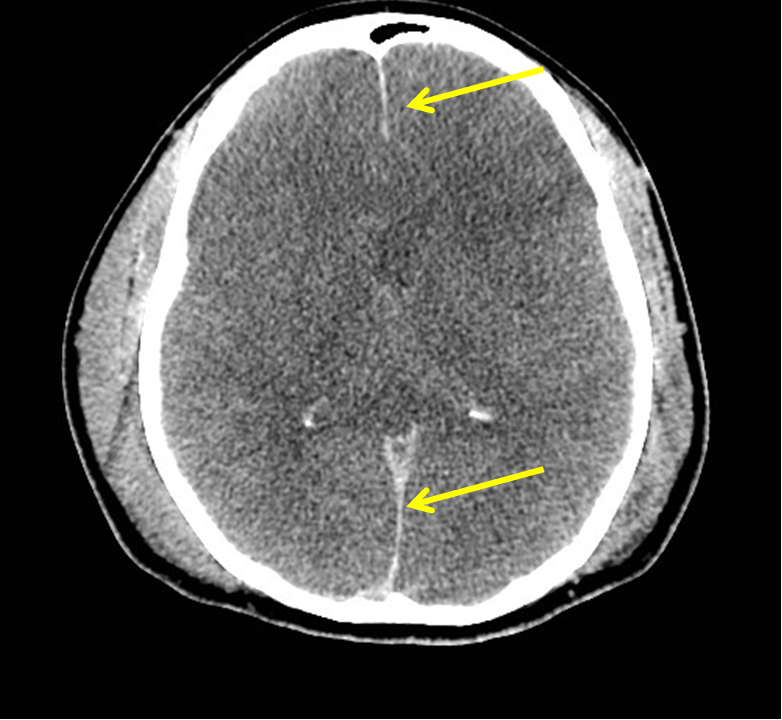Hyperosmolar hyperglycemic state CT scan
|
Hyperosmolar hyperglycemic state Microchapters |
|
Differentiating Hyperosmolar hyperglycemic state from other Diseases |
|---|
|
Diagnosis |
|
Treatment |
|
Case Studies |
|
Hyperosmolar hyperglycemic state CT scan On the Web |
|
American Roentgen Ray Society Images of Hyperosmolar hyperglycemic state CT scan |
|
Risk calculators and risk factors for Hyperosmolar hyperglycemic state CT scan |
Editor-In-Chief: C. Michael Gibson, M.S., M.D. [1]; Associate Editor(s)-in-Chief: Husnain Shaukat, M.D [2]
Overview
CT scan may be helpful in the workup of hyperosmolar hyperglycemic state when a patient presents with an altered state of consciousness or with focal neurological signs and symptoms to rule out stroke. CT scan can also help in the diagnosis of cerebral edema which can occur as a complication of treatment of hyperosmolar hyperglycemic state.
CT scan
- CT scan may be helpful in the workup of hyperosmolar hyperglycemic state when a patient presents with an altered state of consciousness or with focal neurological signs and symptoms to rule out stroke.
- CT scan may also aid in the diagnosis of cerebral edema which can occur as a complication of treatment of hyperosmolar hyperglycemic state.[1]
- The following findings can be seen in cerebral edema on CT scan:[2][3]
- Diffuse effacement of the sulci and lateral ventricles
- Hypoattenuation of the brain parenchyma

References
- ↑ Arieff AI (1986). "Cerebral edema complicating nonketotic hyperosmolar coma". Miner Electrolyte Metab. 12 (5–6): 383–9. PMID 3543638.
- ↑ Park KY, Kim JH, Chung CS, Lee KH, Chung PW, Kim BM, Kim GM (2007). "Cortical sulcal effacement on brain CT associated with cerebral hyperperfusion after carotid artery stenting". J. Neurol. Sci. 260 (1–2): 83–6. doi:10.1016/j.jns.2007.04.010. PMID 17521673.
- ↑ Butcher KS, Lee SB, Parsons MW, Allport L, Fink J, Tress B, Donnan G, Davis SM (2007). "Differential prognosis of isolated cortical swelling and hypoattenuation on CT in acute stroke". Stroke. 38 (3): 941–7. doi:10.1161/01.STR.0000258099.69995.b6. PMID 17272776.